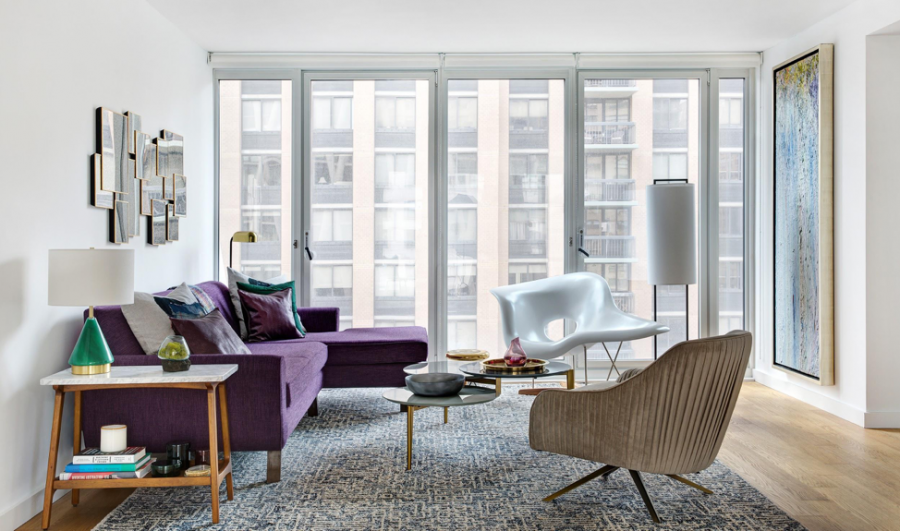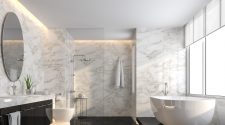Sustainability is on the rise globally, from the food industry, to the fashion industry, to the interior design industry. While in the past, home decor trends have sourced furniture and materials without a greater understanding of their implications for the environment, the interior design industry is now turning to sustainable and eco-friendly interior design solutions as alternatives to reduce the environmental impact, especially through the newest interior design trends.

The first thing you can do to create a more eco-friendly interior design through your home decor is to source pieces from existing materials instead of purchasing something new. There are countless artisans that make pieces from reclaimed materials to create gorgeous decor without the production of new or harmful materials. There are countless ways to upcycle materials like used wood to make new usage out of them for things like tables, doors, or wall decor. Not only is this great for the environment, it’s also one of the most popular emerging interior design trends. Repurposed pieces are unique and one of a kind, so you can enjoy them knowing no one has quite the same home decor as you, while enjoying the style that comes from these popular interior design trends.
You can also use plants suggested by Décor Aid as interior decoration elements. Look around at any interior design, from minimalist to luxury, and you’ll notice that all the best interior design incorporates the use of plants. It’s easy to see why this is one of the interior design trends that will never go out of style— they provide a fresh, lively inclusion of color that artificial decor just can’t. Plants come in such a wide variety that it’s easy to find something that pairs well with your existing home decor, making for the best interior design accents. Instead of turning to something artificial, let the natural inclusion of plants steer your design towards a more eco-friendly route. Some plants even improve air quality, and filter out harmful toxins and chemicals from the air, further purifying your home, which has been found especially useful for many interior design NYC concepts.
Electricity is an energy-sucking source for light. Instead, you can include solutions in your interior design that allow you to use less electricity, and use more natural light. Avoid painting your walls in dark tones, as this will very evidently make the room darker and increase the need for more lights, lamps, and other light fixtures in the room. Instead, opt for clean white walls that will reflect and bounce light around the room. You can then cut down on lighting costs as they won’t always be necessary to have on. Interior design NYC standards have changed in the way that people have tried to cut down on energy-sucking costs, so this have proven effective.
In a similar fashion, instead of blasting a heater when there’s a slight chill in the air, maximize the heat produced from the sunlight by clearing out anything blocking your windows so a clear light can come in. You can caulk your windows or use double glazing to ensure that no heat escapes, and no cold air comes inside. This will require that you use less energy and save you on costs through these small interior design changes.
When sourcing new furniture, look for pieces made from natural materials for your interior decoration—meaning avoid plastics and other man-made materials. Look for things like natural woods, bamboo, stone, or other sustainable options. It’s even more impactful when you use pieces that are aged or antiqued, because you won’t be propagating the production of more man-made materials, instead re-homing a piece that had existing natural materials and giving them a second life for the best interior design.
The same goes for textiles. As synthetic textiles seem to be dominating the market, it’s important to keep an eye open for natural textiles when choosing a new rug, throw blanket, pillow, or other piece of home decor that uses fabric. Materials like wool, cotton, and jute are all preferential for rugs, and give a variety of different appearances and textures, so it’s easy to find something that pairs well with the rest of your interior decoration. Even ensuring the stuffing of your materials is made of something like wool can make a difference in the industry. Putting your monetary support towards something more natural and choosing to not support the production of synthetic materials that end up in landfills will decrease the necessity for more to be made.
When choosing a type of flooring for your interior decoration, always go with stone or wood flooring. Not only are they far easier to maintain and clean, but they have much longer lifespans than that of a carpet. They also eliminate the need for incessant vacuuming, and are much more livable for those with allergies or pets. Additionally, other synthetic floor materials like linoleum can contain toxic materials like volatile organic compounds, known as VOCs. These VOCs release toxins into the air of your home, which can create health issues down the line. Play it safer and much cleaner with the use of stone or wood flooring for the best interior design.















